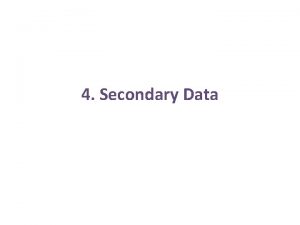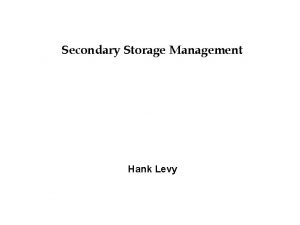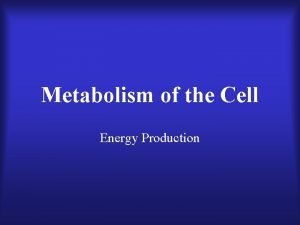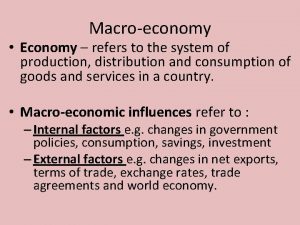Secondary Production Secondary production refers to the production











- Slides: 11

Secondary Production

�Secondary production refers to the production of biomass in consumers �Production efficiency = (Net Secondary Production) / (Assimilation of primary production) �Energy lost from waste is not considered assimilated

Animals are inefficient �Energy is lost in the form of cellular respiration for all animals, but efficiency differs from organism to organism. �Insects ~ 40% efficiency �Fish ~ 10% efficiency �Mammals/Birds ~ 3% efficiency

Trophic efficiency �Efficiency can be measured by trophic levels as the percent of production transferred to the next trophic level �Production can never increase, only decrease �As a rule, only about 10% of energy transfers from one trophic level to the next. Pyramid of production

�Biomass pyramids show the amount of biomass at each trophic level and are usually similar to pyramids of production �Rarely a short turnover rate (standing crop mass / production) can result in a system with higher primary consumer biomass than primary producer biomass.

Pyramid of numbers �Because top predators tend to be large, and the top trophic levels already are constrained to small biomass numbers there are very few predators in most populations compared to primary consumers.

Why is the world green? �One question that has been surprisingly difficult to answer is “Why is the world green? ” Put another way, “Why are herbivores unable to deplete primary producer biomass? ”

Green World Hypothesis �Predators, parasites, and disease keep herbivore populations from overwhelming primary producers �Other factors that may explain this observation: Plants have defenses against herbivores It is not energy, but nutrients that limit growth Abiotic factors like season limit consumers

Cycling

Nutrient Cycling

 Diagram alur produksi
Diagram alur produksi Thế nào là mạng điện lắp đặt kiểu nổi
Thế nào là mạng điện lắp đặt kiểu nổi Mật thư tọa độ 5x5
Mật thư tọa độ 5x5 Lời thề hippocrates
Lời thề hippocrates Vẽ hình chiếu đứng bằng cạnh của vật thể
Vẽ hình chiếu đứng bằng cạnh của vật thể Chụp tư thế worms-breton
Chụp tư thế worms-breton Quá trình desamine hóa có thể tạo ra
Quá trình desamine hóa có thể tạo ra Sự nuôi và dạy con của hổ
Sự nuôi và dạy con của hổ Dạng đột biến một nhiễm là
Dạng đột biến một nhiễm là điện thế nghỉ
điện thế nghỉ Các châu lục và đại dương trên thế giới
Các châu lục và đại dương trên thế giới Bổ thể
Bổ thể





















